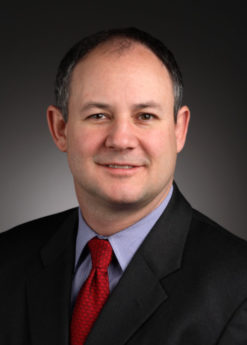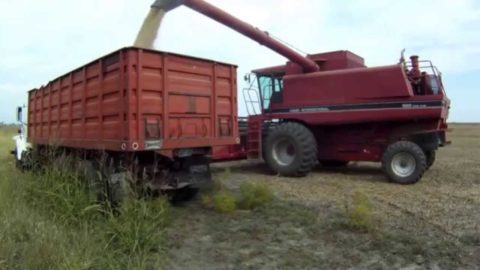HOME | ABOUT US | MEDIA KIT | CONTACT US | INQUIRE
HOME | ABOUT US | MEDIA KIT | CONTACT US | INQUIRE

A year ago, and even through mid-2019, fears of an impending recession loomed large. Now? The longest expansion in U.S. history could have several years yet to run, economists say.
Let’s walk 12 months down Memory Lane in Investorville, shall we?
Just a short year ago, investors were still whiffing the smelling salts after a knock-out December that saw equities absolutely hammered to close out 2018. The Dow Jones Industrial Average shed 8.66 percent in December alone, and was off 13.05 percent from its 2018 high, set less than three months earlier.

“I get an amazing contrast with people I speak with—it’s a big country, but you find that some companies are doing very well, and some are not.” — Chris Kuehl, Armada Corporate Intelligence
The Federal Reserve Bank, shrugging off conventional wisdom that the Dow was a leading indicator, nonetheless held to its previous declarations that the new year would produce at least two increases in the federal funds rate, looking to avoid an overheated economy and further spooking the markets. Bond yields were beginning to move toward the yield-curve inversion phase that by mid-summer would have the chattering classes of 24/7 financial TV insisting that recession was bruising its knuckles on our front door. Oil prices hit a 2018 low of $42.53 on Christmas Eve, signaling weak demand and soft global growth in the coming year.
Then a funny thing happened on the way to Armageddon. Twelve months later, as 2019 drew to a close, bond yields had returned to more normal patterns, oil was pushing $62 a barrel (up more than 45 percent from its 2018 low), and the Fed—rather than raising rates in two steps for the year—had wrapped up its third cut of 2018.
The upshot of all that can be found in a four-letter word to describe what happened in the final six months of the year just passed: B-o-o-m. The Dow ended up 22.24 percent higher and, much to the relief of fixed-income investors, 2019 goes into the books as one of those comparatively unusual periods where both equities and bonds performed well.
Scott Colbert isn’t an overtly “Told Ya So” kind of guy, but the chief economist for Commerce Trust Co., takes a measure of pride in knowing that the firm’s boots-on-the-ground advisory services never did see any signs of a recession looming. Quite the opposite.
“We’re in touch with business and the people who borrow money,” Colbert said. To a business and to a person in 2019, he said, “there was barely an uptick in delinquencies, defaults or losses. It made no sense to us when we looked at the facts on the ground” that a recession was in the offing. Sure, the nation can talk itself into a recession—there’s a good case to be made that economic fundamentals by themselves don’t dictate down cycles. But hype over disastrous consequences from the administration’s trade posture with China and some other nations never really measured up to the fear-mongering.
To be sure, American farmers and manufacturers have suffered over the China tariffs, but a couple of things are happening that suggest an easing to their pain, if not an end to it. Economists say the swine flu epidemic in China will drive imports from the U.S. back up, especially with soybeans to feed herds that are being rebuilt. And many manufacturers have redrawn their supply lines to be less-reliant on China, avoiding much of the tariff risk in the short-term, but potentially creating a long-term benefit of more competitive supply lines that will endure past a trade resolution.
So where does the gap between forecast and economic reality come from? In part, it’s because we are in some ways a two-nation economy, divided there just as we are politically.
“I get an amazing contrast with people I speak with—it’s a big country, but you find that some companies are doing very well, and some are not,” says Chris Kuehl of Armada Corporate Intelligence. “You go from one group that is just exuberant and has never had orders like this to people a day later saying ‘we are all going to drink Kool-aid because we haven’t made any money. Things that used to make money don’t, and things that didn’t, do.”

“There was barely an uptick in delinquencies, defaults or losses. It made no sense to us when we looked at the facts on the ground that a recession was in the offing.” — Scott Colbert, chief economist, Commerce Trust Co.
That’s what’s known as an economy in transition, which any retailer or commercial real-estate agent can explain in enormous and painful detail. But if you want to know where the economy is headed, you might want to pay attention to what’s happening with consumers, Kuehl said. After all, two-thirds of the nation’s nearly $21.5 trillion GDP is grounded in consumer spending.
“As long as the consumer has a job, and is confident, they spend,” Kuehl said. That employment and that spending, he said, are two of three things that matter most to the economy, the other being inflation, which remains under control.
“They are all sort of related,” Kuehl said. “The employment numbers are very good, but hide longer-term problems. The issue is that there are not enough workers,” which can choke off the ability of business to expand. “Just the last couple months, wages started to come up the way we’ve expected, because there’s enough labor shortage that the under-skilled are also getting paid more.”
One reason for optimism among economists is an improvement in global finance.
“There are less negative yields around the globe,” says Dan Heckman of U.S. Bank. “Negative rates peaked last July and August, which was significant, because we had seen $17 trillion in debt worldwide with negative rates attached. To me, that was alarming: It conveyed weak growth on a global basis.” Today, it’s harder to find signs of looming trouble. As for recession, he said, “it’s really hard to imagine. There may be a continual flattening or slowdown in the growth rate, but not a recession—we’re not calling for that by any means.”
Still, he said, the labor market remains so tight that many companies are unable to find the talent they need to drive expansion. “It will be tough to maintain a high growth rate when labor is this tight. There’s just not enough available labor to allow the economy to grow at a 3 percent clip. With wages rising, there’s a risk of excessive growth that outstrips productivity growth, a potential inflation trigger. “Those are the two concerns we’d have,” Heckman said.
KC Mathews, chief economist for UMB Bank, noted that the U.S. set a record for the longest expansion in its history six months ago. That it hasn’t entered recession, and isn’t likely to soon, can be attributed in large part to a series of pauses that have somewhat muted the traditional rhythms of business cycles.
“The current economic expansion has delivered average annual GDP growth of just 2.3 percent since 2009 vs. the average growth during an economic expansion of 4.6 percent since 1945,” Mathews noted. Slowdowns, even recessionary trends within limited sectors, he said, “have been beneficial as they mitigate any economic imbalances or excess that often lead to a more traditional recession. As we look ahead, past pauses that the economy experienced may offer clues into future economic performance.”

Ready to Rebound? In the Kansas City region, agribusiness
and manufacturing have been hurt by the U.S. tariff dispute
with China, but could see an upturn with recent movement
in trade negotiations.
We’re currently in the middle of the third pause since the Great Recession, Mathews said, coming off of a high cycle for global manufacturing in December 2017 at 54.4. Output there has contracted for six straight months, largely because of the trade dispute with China, and as part of that, U.S. manufacturing activity has contracted for three straight months, he said, with industrial production, year over year, negative over the past two months.
Still, he said, while there are “numerous catalysts that can lead to a recession such as inflation, high interest rates and other imbalances in the economy, the pauses experienced in this expansion have curtailed these pot-ential threats, allowing the U.S. economy to grow modestly and perhaps extend the current expansion cycle for several years.”
Apart from the national picture, things are a shade darker for the regional economy, said Ernie Goss, an Omaha-based economist who closely tracks banking performance in the Midwest. Regional GDP is probably a half-point or full point below the national growth rate of about 2 percent for 2019. While he’s hopeful that farmers have ridden out the worst of a five-year ag downturn, he doesn’t see a long runway for growth in 2020.
The recent trade pact to replace NAFTA is a positive sign for this region, Goss said, but because debt levels for farmers have increased, “there is still some risk out there for the ag sector.” Banks in the region have responded to that by tightening lending standards and raising interest rates on farm loans, and that strategy is keeping them afloat, Goss said.
Looking ahead, he anticipates continued consolidation in the farm sector, with a slight risk of more foreclosures or bankruptcies. But in general, the conditions that created a wrenching downturn in the ag sector in the 1980s “have not been forgotten by the farmer or the banker,” he said, and farmers have throttled back on capital spending to ride this out.
Ag will benefit from the updated form of quantitative easing being practiced by the Fed in recent months, buying up long-term debt, and that will make U.S. farm exports more competitive. But perhaps the biggest economic challenge in rural America is the same one keeping urban business executives up at night.
“We always get the same response: Labor is our biggest challenge for 2020, and it was in 2019, and it will be in 2021,” Goss said. “That is the big, big issue for rural areas. That is a big, big issue for manufacturing, though not as much for ag here, but it is an issue. This is not California ag, this is Midwest ag: we are much more capital-intensive, not labor-intensive.”
For investors, said Keuhl, a reason for optimism is the investment in infrastructure by other nations. “We’ve seen a lot of interest in big construction and engineering companies, the companies that are building stuff,” he said. “The new IMF head is a big infrastructure advocate. In countries like Bulgaria, they’re saying ‘we need to go back to our roots and pay for infrastructure,’ then they can make a big leap. There is a lot of opportunities for companies that do that, and a lot of countries are saying what we need to do is build roads.”